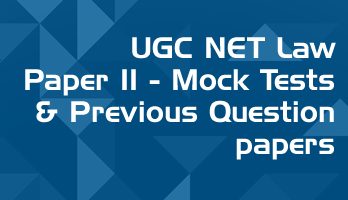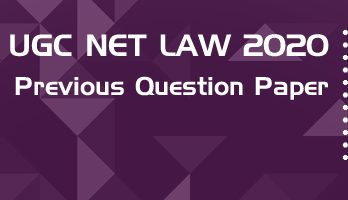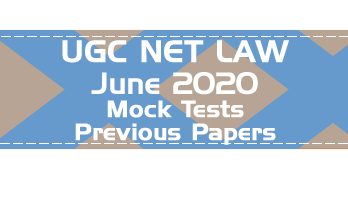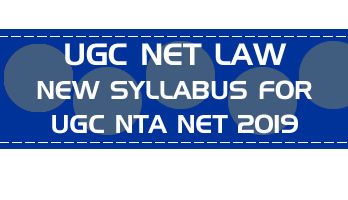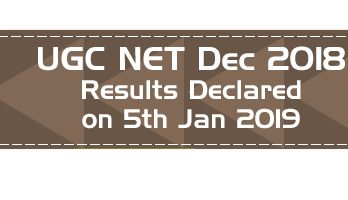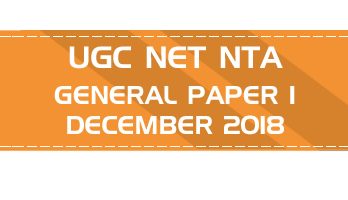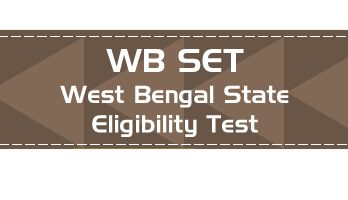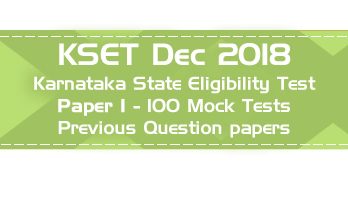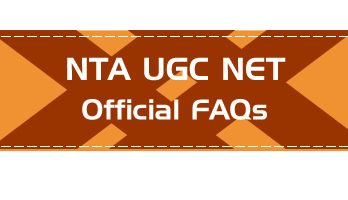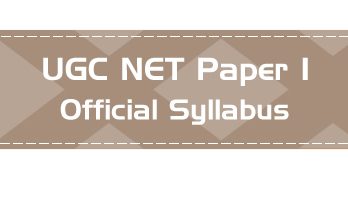- Latest Pattern Mock Tests including comprehension based questions
- Previous Question Papers with Answer Keys - From 2004 till the most recent exam
- 75 Full Length Mock Tests - New Pattern Paper II, with 100 questions each
- 50 Mini Practice Mock tests - with 25 questions each
- Unlimited Practice - New Questions in every attempt of all mocks
- Questions & Answer Choices randomly shuffled in every attempt for better practice
- Database of over 11000+ MCQs covering the entire syllabus
- Unlimited access and practice for one year from the date of purchase
- Accessible 24 x 7 via Smart-Phone browsers and Desktops
Authentic Feedback from previous LawMint users :
I got AIR 21 in CLAT PG. Thank you so much. Your mocks helped me a lot in my preparation 🙂 - Ayushi Jain
I have subscribed to your CLAT PG program and got AIR 36 in this year CLAT PG. I have also secured AIR 54 in AILET PG exam. I would like to thank you. Your mock paper really helps a lot - Shrashank Tripathi
I would like to thank you for the CLAT PG LLM COURSE. Practising mock tests there helped me in getting confidence and hence I was able to get AIR 45 in CLAT PG LLM - Akshay Awasthi
A year back, I relied on the IIT Kharagpur RGSOIPL mock test series by LawMint to prepare for my RGSOIPL entrance test. Few months back, I relied on your UGC NET Law series to prepare for UGC NET. I was the topper of the RGSOIPL entrance, and have cracked JRF in UGC NET. All thanks to LawMint - Anshuman Sahoo
"I got AIR 18 in CLAT PG and General Category rank 28 in AILET PG. I want to thank you for helping me practice well in controlled conditions from any place. It gave me a lot of confidence and I took the tests while travelling too. I also made it to IIT Kharagpur." - Vinodharani
"Lawmint has been of great help to me in securing AIR 25 in AILET PG and AIR 29 in CLAT PG examinations. The subjective and objective approach of the test series kept me up to date with the latest exam pattern." - Bhawna Nanda
"I, Nimmy Saira Zachariah joined you clat test series. I cleared AILET PG with 30th rank. Your test series were of immense help as it gave me clear idea of where my preparations stand thank you once again law mint." - Nimmy S Z
"Hey guys. Where do I start? If I thought that getting AIR 59 in Clat PG was it, then how wrong I was. With Lawmint now I have cracked UGC NET as well." - Joyanta Chakraborty
Read this article to read the detailed article about the detailed official UGC Net Law syllabus that has been rolled out from 2018. The UGC Net Law exam is now completely an objective type test, with 100 MCQs in Law Paper II.
The FAQs – Frequently Asked Questions about the UGC NET exam are in this article : Ugc Net by Cbse – The complete list of faqs.
The best way to prepare for the UGC NET Law exam is to practice as many previous question papers and solve as many mock tests as possible. Register for our free demo mock tests using the link at the top of this article. All the previous question papers published on LawMint can be practiced as online mock tests in our UGC Net practice course; which also has a database of several thousand MCQs covering the complete UGC Net Law syllabus.
Note : The UGC NET syllabus for papers 1 & 2 was changed since Jan 2019
Q. Read Assertion (A) and Reason (R) and give the correct answer using the codes given below :
Assertion (A) : By amendment, the parliament cannot destroy the Basic features of the Constitution of India.
Reason (R) : The power to amend, does not inc
– Both (A) and (R) are true, but (R) is not the correct explanation of (A).
– Both (A) and (R) are true and (R) is the correct explanation of (A).
– (A) is false, but (R) is true.
– (A) is true, but (R) is false.
Q. The Special Bench of the Supreme Court unanimously observed that, even petitions filed under Article 32 are subject to the general principle of res judicata in one of the following cases.
– M.S.M. Sharma v/s. Dr. Sree Krishna Sinha
– S.P. Gupta v/s. Union of India
– Charanlal Sahu v/s. K.R. Narayanan
– Ranji Thomas v/s. Union of India
Q. Which of the following Article/Articles of the Constitution empowers the Parliament and the Legislature of a State to create ‘the contingency Fund of India’ or “the Contingency Fund of the State”?
(i) 265
(ii) 266
(iii) 267
(iv) 268
– (i), (ii) and (iv)
– (i), (iii) and (iv)
– (ii) and (iii)
– (iii) only
Q. In case of a bill other than money bill the State Legislative Council
– can veto the bill
– cannot veto the bill
– request a joint session of the Legislature
– send the fill back for reconsideration
Q. In case of inconsistency between the laws made by Parliament and the laws made by the State Legislature, which one of the following shall prevail ?
– The Law made by Legislature of the State.
– The Law made by Parliament before the Law made by Legislature of the State.
– The Law made by Parliament after the law made by the State.
– The Law made by Parliament either before or after the law made by the Legislature of the State.
Q. The term ‘Law’ includes every branch of Law, yet there is difference between Constitutional law made in exercise of Sovereign Powers and hence an amendment is notcovered within the definition of Law provided in Article 13(2) and (3) of the Constitution of India. This observation was made by the Supreme Court in
– Sajjan Singh v/s. State of Rajasthan
– Sankari Prasad v/s. Union of India
– Golaknath v/s. State of Punjab
– Maneka Gandhi v/s. Union of India
Q. Match List-I with List-II and give the correct answer by using codes given below the lists.
List – I
(a) Rajesh Gupta v/s. State of U.P.
(b) Attorney General of India v/s. Lachma Devi
(c) Avinash Mehrotra v/s. Union of India
(d) Vishal Jeet v/s. Union of India
List – II
(i) Execution of Death sentence by public hanging.
(ii) Reservation to women.
(iii) Traffic in human beings includes devadasis.
(iv) Right to safe education.
Choose the answer that corresponds to the order (a) (b) (c) (d)
– (ii) (i) (iv) (iii)
– (i) (ii) (iv) (iii)
– (ii) (iii) (i) (iv)
– (iii) (iv) (ii) (i)
Q. Match List-I with List-II and find the correct answer by using codes given below the lists.
List – I
(a) A.C. Jose v/s. Sivan Pillai
(b) S.S. Dhanoa v/s. Union of India
(c) Digivijay Mote v/s. Union of India
(d) Peoples union for Civil liberties v/s. Union of India
List – II
(i) Powers of Electron Commissioners
(ii) Provisions for NOTA
(iii) Use of electronic machines for casting votes
(iv) Postponement of the election on account of disturbed conditions
Choose the answer that corresponds to the order (a) (b) (c) (d)
– (iii) (i) (iv) (ii)
– (iii) (ii) (iv) (i)
– (ii) (iii) (i) (iv)
– (iv) (i) (iii) (ii)
Q. Read Assertion (A) and Reason (R) and answer by using the codes given below :
Assertion (A) : Administrative law is a law, but it is not law in the lawyer’s sense of the term like property or contract law.
Reason (R) : In India, Administrative law, is a combination of judicial precedents and statutes.
– Both (A) and (R) are true and (R) is correct explanation of (A).
– Both (A) and (R) are true, but (R) is not correct explanation of (A).
– (A) is true, but (R) is false.
– (A) is false, but (R) is true.
Q. In which of the following cases doctrine of necessity was applied by the Supreme Court ?
Answer by using the codes below :
(a) Election Commission of India v/s. Dr. Subramaniam Swamy.
(b) Ashok Kumar Yadav v/s. State of Haryana.
(c) Institute of Charted Accountants of India v/s. L.K. Ratna.
(d) Amarnath Chowdhary v/s. Braithwaite.
– (a) and (b) only
– (c) and (d) only
– (a), (b) and (c) only
– (a), (b), (c) and (d) all
Q. In which of following cases the Supreme Court of India made reference to ‘legitimate expectation’ to review the administrative action ?
– State of Haryana v/s. Darshana Devi.
– State of Kerala v/s. K.G. Madhavan Pillai.
– Mahavir Singh v/s. State of Rajasthan.
– SAHELI, A Women Resource Centre v/s. Commissioner of Police.
Q. Which of the following statement is correct in relation to the establishment of Lokayukta under the Lokpal and Lokayukta Act, 2013 ?
– Every State shall establish Lokayukta strictly under this Act within four years from the date of commencement of the Act.
– Every State shall establish Lokayukta by the law of legislature, if not established earlier, within one year from the date of commencement of the Act.
– The states already having Lokayukta shall amend their Acts within one year and other states shall establish within two years from the date of commencement of the Act.
– States need not to establish Lokayukta.
Q. In the following cases Lokpal has jurisdiction to conduct inquiry. Answer by using the codes below :
(a) Member of Parliament
(b) Group ‘C’ and ‘D’ public servants
(c) Employee of the Board or Corporation or Company financed by Central Government.
(d) Any officer of Society or Association or Trust wholly or partly financed by Central Government.
– (a) and (d) only
– (b) and (c) only
– (a), (b) and (c) only
– (a), (b), (c) and (d) all
Q. Give correct answer by using the codes given below :
(a) The writ of mandamus as well as the writ of certiorari is available against administrative authorities as well as judicial and Quasi-judicial authorities.
(b) The writ of mandamus acts where authority declines jurisdiction whereas the writ of certiorari acts where the courts and tribunals exceed their jurisdiction.
(c) The writ of mandamus compels whereas the writ of certioraris corrects.
– Only (a) is correct.
– Only (a) and (b) are correct.
– Only (b) and (c) are correct.
– (a), (b) and (c) all are correct.
Q. Match List-I with List-II using codes given below :
List – I
(a) A.K. Kraipak v/s. Union of India.
(b) Gullapalli Nageswar Rao v/s. A.P.S.R.T.
(c) State of Orissa v/s. Binapani Devi.
(d) Mahapatra & Co. v/s. State of Orissa.
List – II
(i) Rule of Pecuniary bias.
(ii) Rule of official bias.
(iii) Rule of Personal bias.
(iv) Rule of hearing.
Choose the answer that corresponds to the order (a) (b) (c) (d)
– (i) (ii) (iii) (iv)
– (iii) (ii) (iv) (i)
– (iii) (i) (ii) (iv)
– (iv) (ii) (i) (iii)
Q. Which one of the following theories of punishment studies the psychology of the criminal and takes the punishment as a social end ?
– Preventive
– Deterrent
– Reformative
– Retributive
Q. The movement of progressive societies has hitherto been a movement from status to contract. This statement is of
– Savigny
– Roscoe Pound
– Henry Maine
– Puchta
Q. The difference between judicial and legislative creativity has been that “the creative power of the court is limited by existing legal material at their command. They find the material and shape it. The legislature may manufacture entirely new material.” This statement is of
– Kelsen
– Blackstone
– Allen
– Bentham
Q. Match List-I with List-II and select the correct answer using codes given below.
List – I (Statement)
(a) Principal deposits goods with an agent.
(b) Buyer purchasing a book from the shopkeeper.
(c) Owner losing his watch.
(d) Author’s copyright to his work.
List – II (Kind of Possession)
(i) Corporeal Possession
(ii) Mediate Possession
(iii) Incorporeal Possession
(iv) Immediate Possession
Choose the answer that corresponds to the order (a) (b) (c) (d)
– (ii) (i) (iv) (iii)
– (iii) (ii) (iv) (i)
– (ii) (iv) (i) (iii)
– (i) (ii) (iii) (iv)
Q. Read Assertion (A) and Reason (R) and give the correct answer with the help of codes given below :
Assertion (A) : The most important power of an owner is the right to exclude others.
Reason (R) : The owner may grant to another many of his rights and yet remain owner.
– (A) and (R) are true and (R) is the correct explanation of (A).
– (A) and (R) are true, but (R) is not the correct explanation of (A).
– (A) is true, but (R) is false.
– (A) is false, but (R) is true.
Q. Match List-I with List-II and select the correct answer using the codes given below.
List – I
(a) Right not to be harmed.
(b) Right of freedom from bodily harm.
(c) Right to recover debt.
(d) Right to recover debt barred by lapse of time.
List – II
(i) Imperfect Right
(ii) Right in Personal
(iii) Personal Right
(iv) Negative Right
Choose the answer that corresponds to the order (a) (b) (c) (d)
– (i) (ii) (iii) (iv)
– (iv) (iii) (ii) (i)
– (ii) (iv) (i) (iii)
– (iii) (i) (iv) (ii)
Q. Read Assertion (A) and Reason (R) and give the correct answer with the help of codes given below :
Assertion (A) : Austin said that, “only the laws set by sovereign to the members of a political society are positive law or law simply and strictly so called”.
Reason (R) : In this theme of explaining laws, Austin attached importance to the element of sanction.
– (A) and (R) are true and (R) is the correct explanation of (A).
– (A) and (R) are true, but (R) is not the correct explanation of (A).
– (A) is true, but (R) is false.
– (A) is false, but (R) is true.
Q. Which one of the following statement correctly conveys Fuller’s theory of inner morality of law ?
– The contents of every law, in order to be valid, must be of a minimum moral standard.
– The question of morality of law is not for the courts.
– The question of morality of every law is a matter for the inner conscience of the legislators and judges have nothing to do with it.
– Every piece of law, in order to be valid, must fulfil certain procedural requirements like generality and consistency, etc.
Q. Considering the jurisdiction for trial of accused Match List-I with List-II using the codes given below :
List – I
(i) Person travelling in British Airway at Delhi.
(ii) Indian travelling in Air India at Pakistan.
(iii) A Sovereign representing an un-recognised state.
(iv) A man while in voyage with his Indian wife.
List – II
(a) Country having its admiralty jurisdiction.
(b) India having its extra-territorial jurisdiction.
(c) India, provided he is an Indian national.
(d) Immunity by virtue of convention.
Choose the answer that corresponds to the order (a) (b) (c) (d)
– (i) (ii) (iv) (iii)
– (ii) (i) (iii) (iv)
– (iii) (ii) (iv) (i)
– (iv) (iii) (i) (ii)
Q. In which of the following judicial commutation becomes an impossibility ?
– Double murder
– Sedition
– Gang rape followed by homicide
– Refugee committing a crime in India
- Latest Pattern Mock Tests including comprehension based questions
- Previous Question Papers with Answer Keys - From 2004 till the most recent exam
- 75 Full Length Mock Tests - New Pattern Paper II, with 100 questions each
- 50 Mini Practice Mock tests - with 25 questions each
- Unlimited Practice - New Questions in every attempt of all mocks
- Questions & Answer Choices randomly shuffled in every attempt for better practice
- Database of over 11000+ MCQs covering the entire syllabus
- Unlimited access and practice for one year from the date of purchase
- Accessible 24 x 7 via Smart-Phone browsers and Desktops
Authentic Feedback from previous LawMint users :
I got AIR 21 in CLAT PG. Thank you so much. Your mocks helped me a lot in my preparation 🙂 - Ayushi Jain
I have subscribed to your CLAT PG program and got AIR 36 in this year CLAT PG. I have also secured AIR 54 in AILET PG exam. I would like to thank you. Your mock paper really helps a lot - Shrashank Tripathi
I would like to thank you for the CLAT PG LLM COURSE. Practising mock tests there helped me in getting confidence and hence I was able to get AIR 45 in CLAT PG LLM - Akshay Awasthi
A year back, I relied on the IIT Kharagpur RGSOIPL mock test series by LawMint to prepare for my RGSOIPL entrance test. Few months back, I relied on your UGC NET Law series to prepare for UGC NET. I was the topper of the RGSOIPL entrance, and have cracked JRF in UGC NET. All thanks to LawMint - Anshuman Sahoo
"I got AIR 18 in CLAT PG and General Category rank 28 in AILET PG. I want to thank you for helping me practice well in controlled conditions from any place. It gave me a lot of confidence and I took the tests while travelling too. I also made it to IIT Kharagpur." - Vinodharani
"Lawmint has been of great help to me in securing AIR 25 in AILET PG and AIR 29 in CLAT PG examinations. The subjective and objective approach of the test series kept me up to date with the latest exam pattern." - Bhawna Nanda
"I, Nimmy Saira Zachariah joined you clat test series. I cleared AILET PG with 30th rank. Your test series were of immense help as it gave me clear idea of where my preparations stand thank you once again law mint." - Nimmy S Z
"Hey guys. Where do I start? If I thought that getting AIR 59 in Clat PG was it, then how wrong I was. With Lawmint now I have cracked UGC NET as well." - Joyanta Chakraborty


